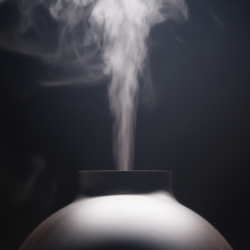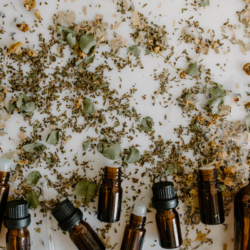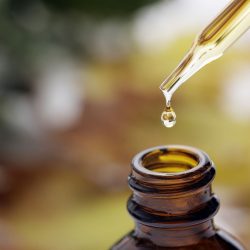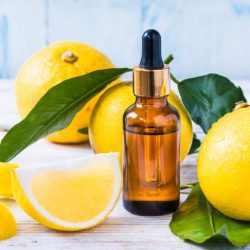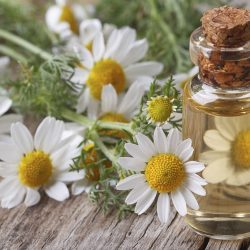“Of all the senses, smell is the one that strikes me the most. How does smell, taste, become perfume? How do our nerves get nuanced? Subtle, sublime interpreters of what cannot be seen, cannot be heard, cannot be written with words? The smell would be like a soul, immaterial. These sentences by Marcel Hanoun , filmmaker and thinker, poetically illustrate the mysteries of olfaction .
Smell in humans
According to a recent study, humans can distinguish a trillion different smells . For a long time it was considered that smell was one of the least developed senses in man. It is true that our nasal mucosa hardly represents more than 3 cm2, against 30 to 100 cm2 in dogs! Certainly, during evolution, we have lost many of our olfactory genes (about 60% according to the most recent studies), we no longer use our sense of smell to smell our prey or to find our way.
Nevertheless, the human baby, “the most beautiful of mammals”, crawls, guided by its smell, to its mother’s breast from the first minutes of life. He manages to recognize his mother’s scent from his third day of existence. The first emotional bonds of the human being thus pass by the sense of smell . The olfactory system is one of the first to develop in the fetus (from its 8th week) and in utero , the odors conveyed via the amniotic fluid offer it its first olfactory experiences.
As eyesight develops, it seems that the sense of smell diminishes in humans, especially as our modern society makes life difficult with odors deemed “unpleasant”, especially natural body odors.
It appears that women are better than men (once again!) At “detecting, identifying, discriminating and memorizing smells”. This finesse of female smell can be multiplied by 100 at certain times of their cycle!
Smell, directly linked to the brain
Our olfactory mucosa, located in the nasal cavity, is made up of receptors directly connected to the olfactory bulb of the brain. These neural receptors bathe in the watery mucus constantly secreted by glandular cells and are renewed every two or three months.
The volatile odorous chemicals present in the air interact with the olfactory receptors and can trigger a nerve impulse causing a series of biochemical reactions before reaching the prefrontal region of the brain, which houses the olfactory bulb. The latter sorts and decodes the information, then projects it onto the cortical areas. It is the hypothalamus, cortex, and limbic system that interpret them as meaningful smells. The cortex, seat of rational perception, identifies and raises awareness of the olfactory message. The hypothalamus “affectively” tints the olfactory message. When the limbic system, seat of emotional memory (hippocampus) and pleasure, it generates a biochemical response.
Thus, smell is a primary sense , directly linked to our limbic system, unlike sight or hearing, which takes more complex paths.
Based on this observation, it is easy to understand how this meaning, in direct connection with our deepest memories , can influence our mood, our behavior and more our health in the broad sense. The study of brain states shows how odors influence our respiratory function, our heart rate, our mind …
Certain olfactory perceptions influence us without our being able to make them aware. This is called a “subliminal effect”.
Essential oils, messengers of memory
The essential oils , concentrated aromatic molecules therefore constitute a formidable therapeutic support. Their innumerable fields of action are found in olfactotherapy , by acting on the various functions of our organism and by rebalancing our terrain.
Aromatic molecules are a way to balance our nervous system and our behavior. It is a privileged way to release certain emotional blockages or to counter addiction phenomena.
Dr. Beghin’s work highlights the activity of aromatic molecules on different areas of the brain. This very interesting reading makes it possible to formulate targeted therapeutic choices. Thus, Dr Baudoux proposes molecular associations to stimulate or soothe our different brains. For example, in order to free the right brain and let our artistic sense emerge, a mixture of essential oils of true lavender ( Lavandula angustifolia ), cedar ( Cedrus Atlantica ), ylang-ylang ( Cananga Odorata ) is beneficial.
Olfactotherapy, a therapeutic alternative
By its direct link with our rhinencephalon (limbic brain), olfactotherapy constitutes a real therapeutic alternative and allows openings which are still poorly measured. Some experiments are carried out with patients in a coma in order to elicit reactions, or with people who have suffered physical traumas in order to help them in their rehabilitation.
Salvador Dali said that smell was, among our five senses, the one that gave us the “best impression of eternity”.
Who has never experienced a dive into our intimate memories following a sensory experience related to a fragrance or a flavor that instantly brings us back to a previous state, to an emotion, to a fragment of life?
Marcel Proust has described this phenomenon wonderfully with his Madeleine de Combray: “… at the very moment when the mingled sip of the cake crumbs touched my palate, I shuddered, attentive to what was happening in me extraordinary. A delicious pleasure had invaded me, isolated, without the notion of its cause. He immediately made me indifferent to the vicissitudes of life, its harmless disasters, its illusory brevity, in the same way that love works, by filling me with a precious essence: or rather this essence was not in existence. me, she was me. I had ceased to feel mediocre, contingent, mortal. Where could this powerful joy have come from? “.
It is the same for reconnecting to a lived situation, to reconnect with the origin of a fear or, conversely, of a joy or a state of well-being.
So, to your vials! And let yourself be carried away!
Essential oils are powerful remedies. Ask your doctor, naturopath or pharmacist for advice on how to use it.



